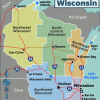If you saw the 1961 film classic “West Side Story,” you will recall the opening scenes where the Jets and the Sharks engaged in an elaborately choreographed turf battle through the streets of Manhattan. But the next time you watch the film, pay less attention to the dancers and look at the various apartment buildings in the background – at one time, they were home to more than 7,000 working-class households, mostly Black and Hispanic residents, and the neighborhood had more than 800 businesses. But that neighborhood doesn’t exist anymore.
What happened? During the 1950s, New York City’s government aggressively insisted this community was a slum in need of clearance, so it used eminent domain to gain control of the land. The residents, who lacked the means to fight this in court, were displaced and the neighborhood was razed – “West Side Story” was filmed on location during this period of dislocation. The area would become the site of the Lincoln Center cultural venue – it seemed giving a new home to the Metropolitan Opera and New York Philharmonic was a great priority than maintaining the domestic stability of 7,000 Black and Hispanic families, none of whom received any government assistance in finding housing elsewhere in a city where nonwhite households were routinely segregated into blighted areas.
Eminent domain is one of the most controversial threats facing property owners. By definition, it enables a government agency to claim private property for public use, with compensation provided to the property owner. In reality, it is too often used to hatch cockamamie development schemes with well-connected private entities while failing to properly compensate the property owners and also failing to consider the stress and trauma of those being dispossessed.
Last week, JPMorgan Chase CEO Jamie Dimon blithely announced that the U.S. government should consider enacting eminent domain to speed up development on renewable energy projects. In his annual letter to shareholders, Dimon – who happens to be a major donor to Democratic Party politicians – lamented over the lack of utility-scale renewable energy developments.
“To expedite progress, governments, businesses and non-governmental organizations need to align across a series of practical policy changes that comprehensively address fundamental issues that are holding us back,” he wrote. “Massive global investment in clean energy technologies must be done and must continue to grow year-over-year. At the same time, permitting reforms are desperately needed to allow investment to be done in any kind of timely way. We may even need to evoke eminent domain – we simply are not getting the adequate investments fast enough for grid, solar, wind and pipeline initiatives.”
Actually, Dimon would need to invoke eminent domain – evoke means “bring or recall to the conscious mind.” Though if we were to evoke eminent domain, we would realize the full hare-brained depth of Dimon’s comments.
For starters, there is no need for “permitting reforms” on renewable energy projects. Quite the opposite – state, county and local governments are overwhelmingly eager to have them, provided they can avoid unleashing ecological chaos in pursuit of the beloved return on investment. Does Dimon’s “reforms” mean diluting or erasing the environmental problems that could arise with the construction of these installations?
Also, Dimon’s insistence that there is a lack of “adequate investments” due to a lack of land for these projects is absurd. Within the financial service world, the three hottest letters driving investment concerns today are “ESG.” The money is there, and then some.
And, ultimately, what property would need to be seized to accommodate Dimon’s vision? Does he want the government to snap up the vast open stretches of farm land – and thus make the country more reliant on imported foods? Does he want construction in national parks? Or is he eyeballing predominantly Black and Hispanic communities for potential uprooting – perhaps by borrowing a page from the Lincoln Center experience?
Also, who profits from this eminent domain seizure? The federal government isn’t going to be operating the solar farms or wind turbines – maybe a current or potential JPMorgan Chase client could get a sweetheart deal on this initiative?
Mercifully, Dimon’s babbling is not likely to impact federal policy. Or maybe he can lead by example and submit to being evicted through eminent domain?
Hey, wouldn’t it be fun if the town of Bedford, the New York City suburb that he calls home, used eminent domain to seize his 33-acre property and use the land to build a solar farm? After all, why should the residents of the town be denied access to inexpensive green energy while Dimon selfishly enjoys a 9,500-square-foot mansion with six bedrooms and 8.5 bathrooms plus a 7,325-square-foot “field house” with a pool, half-basketball court, squash court and a yoga studio? I am sure there will be no shortage of “adequate investments” by developers eager to take over Dimon’s land.
Phil Hall is editor of WRE News. He can be reached at [email protected].
(Photo of Jamie Dimon courtesy of Fortune Global Forum / Flickr Creative Commons)
















